Tips for farm diversifications with a difference
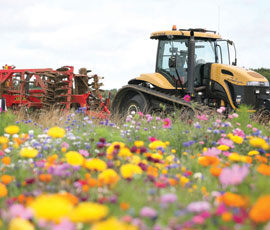
There are the tried-and-tested farm diversifications – and then there are the altogether more unusual ones.
Jez Fredenburgh profiles four businesses that most definitely fall into the latter category.
Click on the tabs below to see how four very different farms made a success of their quirky diversifications and pick up some of their top tips for making your own project bring in a profit.
Shaken Udder
Wicks Manor Farm, Tolleshunt Major, Maldon, Essex
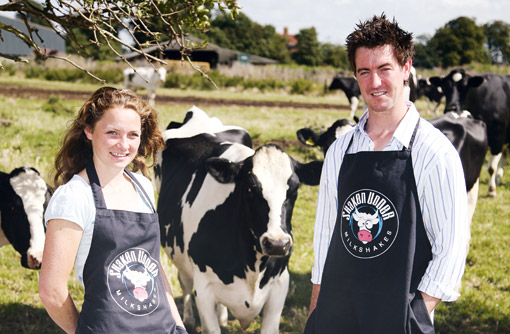
Who’s behind it?
Husband and wife Howie and Jodie Farran. The couple met at Writtle College and run the business from Howie’s parents’ Essex farm. The farm is 1,400ha consisting of arable, sweetcorn, pigs, a farm shop and holiday cottages. Howie’s brother also runs his sausage business from it.
What’s it all about?
Festival-touring milkshakes made from British milk, blended with bananas, strawberries, Belgian chocolate and vanilla beans. The milkshakes are all processed and bottled in Jodie and Howie’s own dairy and bottling plant. In the spring and summer, Shaken Udder tours the country’s music festivals in its trailer, complete with a TV screen showing music videos, and people in cow suits dancing outside.
It produces 40,000 milkshakes a week from the dairy and bottling plant – most of which is run off solar panels. The business now sells in Harvey Nichols, Waitrose, Booths, Selfridges, Harrods, Sainsbury’s and Tesco, and employs 14 permanent staff plus 30 seasonal staff.
How did it all start?
When Jodie and Howie met at agricultural college in 2003, they decided to set up a business to help support the British milk industry. Then at a music festival, Howie had a sudden craving for milkshake – and an epiphany to make festival milkshakes. Soon, the couple found themselves in Howie’s mum’s kitchen testing different flavours.
“Before trying to take a business to the festivals, we knew our shakes needed to taste amazing, so we bought a trolley load of treats, milk and ice-cream and made more than 100 different shakes,” says Jodie.
Once Shaken Udder had gained a festival following, the couple looked to expand into retail. “We looked at milkshakes on the shelves and were not impressed. We went home determined to make a natural shake that tasted like it contained real milk,” says Jodie.
To produce their shakes with a longer shelf-life for retailers, they worked with a product development company, then gathered a team of experts to help build their own commercial-sized dairy.
The business took off with the launch of Shaken Udder on the shelves of Harvey Nichols in 2008, after the retailer’s buyer tasted their milkshakes at a festival.
How is it made?
“We have 4,000 litres of fresh British milk delivered every day which we combine with natural ingredients to make each bottle on our farm,” says Jodie.
“We bottle and package it here and then it goes direct to the supermarkets.”
What has been the biggest challenge?
“Building our own bottling factory here on the farm,” says Jodie.
Greatest achievement?
Getting listings in Waitrose, Tesco and Sainsbury’s were all incredible milestones,” says Jodie, “but we are really hard on ourselves and are always looking to the next milestone.”
What’s next?
“We have lots in the pipeline, but we can’t say too much,” says Jodie.
Any tips for budding entrepreneurs?
“Diversifying is good as it means not all your eggs are in one basket, so go for something that won’t be hit heavily by farming problems, advises Jodie.
“Make sure you work for profit not just to be busy fools, but be prepared to work very hard and always know your numbers – but mainly set a goal and just go for it,” she says.
Fuel Britannia
Broadfield, Merstone, Isle of Wight
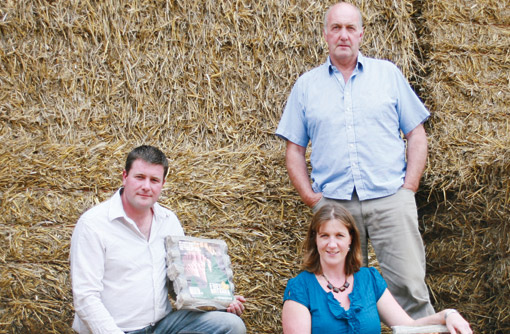
Who’s behind it?
Caroline Knox, brother John Smith and father Tom. Originally dairy farmers in Lanarkshire, they moved to the Isle of Wight 30 years ago and now farm 300ha of wheat, oilseed rape and peas, with a further 200ha under stewardship and rental. Their other businesses include Oil of Wight rapeseed oil, a solar panel farm, biomass boiler, industrial units, plant and event hire and waste transfer.
What’s it all about?
Sustainable straw logs as an alternative to wood, coal or kindling. The straw comes off the family farm and is compressed on-site into 1kg logs the size of wine bottles. At 10% moisture levels, the logs have the same energy value as kiln-dried wood. Customers tend to have woodburners, but limited storage and no access to wood.
“The logs are denser than oak,” says Caroline. “They’re compact, consistent and slow burning – an excellent alternative to fuel, or as kindling.”
How did it all start?
When the family got out of potatoes in 2008, they were left with an empty grading shed. “Farmers abhor a vacuum so we had to fill it with something,” says Caroline. Wondering what to do, they looked at fuel crops.
“At the time, wheat was worth about £80/t, but as fuel it was about £200/t. We looked at the energy value of grain and found the straw values by chance,” says Caroline.
After renting a “woefully inadequate” straw press, they visited Denmark in search of better machinery, came back with a new press and filled the empty shed. To get things going, they applied for a business grant, but were rejected for being “too innovative”.
“After this we got a little stubborn and ploughed on,” says Caroline. She visited trade shows, wrote to magazines and stuck posters in portable toilets.
How is the product made?
The straw is chopped to small lengths, dust and stones extracted, then hammered into a tube shape. The heat generated melts the lignin in the cell walls, which binds the logs together. The logs set under pressure before being cut into lengths and packaged.
What has been the biggest challenge?
Selling the logs – many of the customers are small and, while transport off the island is not limiting, promotion of the product country-wide is challenging.
Seasonal marketing has also been a problem. “Last summer we had lots of interest at trade shows, but then had the mildest winter in years. We also featured on local TV, but in sunny August,” recalls Caroline.
She now has a regular slot on Radio Solent talking about farming – and occasionally mentioning the logs.
Greatest achievement?
“Creating such a diverse farm business between us,” says Caroline, something she attributes to the three of them having different but complementary skills. Plus there’s their two farmworkers. “They’re our greatest asset – they’ve been with us all their working lives and are incredibly capable and versatile.”
What’s next for the business?
The family has its sights on continuous growth utilising its raw materials and is now branching into woodchip for local biomass projects.
Any tips for budding entrepreneurs?
“Utilise all your assets to their maximum, don’t expect it to be easy, check the market very carefully,” advises Caroline. “Speak to people already doing it and trial the product first. Get as much free exposure as possible and take care when spending money on advertising – try to calculate its worth.”
Woad Inc
Beetley, Dereham, Norfolk
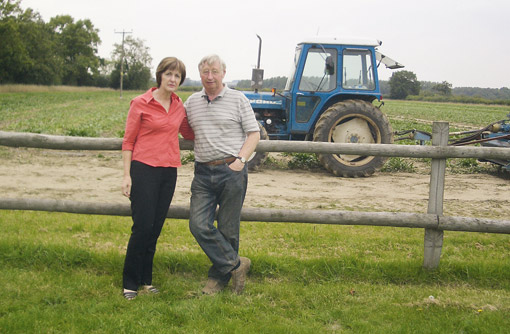
Who’s behind it?
Mid-Norfolk farming couple Ian and Bernadette Howard. The couple used to farm cereals and beef, but now farm 37ha plus neighbouring land, mostly under woad production.
They run The Woad Centre from their converted farm buildings (the Inc in the name, in case you’re wondering, stands for Ian’s Natural Colours – not incorporated).
What’s it all about?
An ancient indigo dye made from the leaves of a herb called woad, famously used by Celtic Queen Boudicca, as a battle-paint and antiseptic.
Ian and Bernadette are the only commercial growers of woad in the UK and the first since the 1930s, when it was used for RAF and police uniforms. Now it is seeing a revival as an environmentally friendly dye.
“We grow and process the plant ourselves and commission craftspeople to make items, but dye choice pieces ourselves,” says Ian.
They sell everything from dyeing kits to pen ink, towels, clothes, and jewellery – all using woad pigment, and sell soaps, body lotions and bath soaks containing omega-rich oil from the plant’s seeds.
How is it made?
“We drill the woad in April and cut it in July before a second cut in October,” says Ian. To extract the pigment, the leaves are soaked in hot water, lime is added and the mixture pumped with air. “The pigment sinks to the bottom, so we take the water off the top and are left with an indigo paste.” This is then baked hard in an oven and ground into a powder.
How did it all start?
Ian spent five years trial-growing woad with other farmers, as part of two research projects on alternative crops, before conducting his own research and experiments over a further three years. “We were growing as we wanted, processing as we wanted – and then got the pigment we wanted,” says Ian.
The couple hired a student to conduct market research, and experimented with colouring bamboo towels. But it was hard work. “We were dyeing 50-60 a day and killing ourselves.”
Dyeing become easier once they’d got the dye on a cone and beam, after which Ian says the bamboo towels “started selling like hotcakes”.
Meanwhile, Bernadette started working with fashion designers, sourcing fabrics, and creating The Woad Centre, from which they would sell.
What has been the biggest challenge?
“We’re passionate for it,” says Ian, “so we don’t stop!”
Greatest achievement?
“There’s something really special about people buying something you’ve made,” says Ian. “I’m also out meeting the public, and doing something different every day.”
What’s next?
Ian and Bernadette are restructuring the company to enable them to devote more time to woad consultancy, and are looking for someone with a small area of land to buy the main business.
“The demand for natural dyes and associated products is continuing to grow both in the UK and abroad. We export throughout the world and have many contacts, but it is time for us to step back a bit and so we really need to find someone who would like to take over from the stage we have reached,” says Ian. “You only need an acre or two.”
Popular workshops will continue throughout the summer, goods and toiletries can be purchased online.
Any tips for budding entrepreneurs?
Be brave and have a go. “If you’ve got an idea, don’t hesitate, just go for it,” says Ian. “I just saw a product with great potential.”
Leavs
Loddon, Norwich, Norfolk
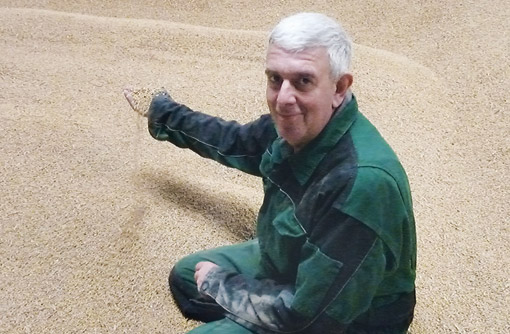
Who’s behind it?
South Norfolk farming couple Richard and Julie Wright. Richard’s family farms 160ha of arable and grass crops, 120 head of beef, contract rear poultry, and run a flower oil-lamp business called Flame and Flowers.
What’s it all about?
Eco-packaging made from dried flowers, chopped straw, leaves, and expanded maize corn. The family grows 70-80% of the material and buys the flowers from farmers in Kent. Clients include a green bike-oil company and a natural toiletries company.
“The core selling point of the product is that it’s environmentally sustainable,” explains Richard. It’s also completely recyclable. “You can use the popcorn to feed chickens, the chopped straw for pet bedding, the flowers for potpourri – and compost the rest for the garden.”
The packaging has also become a marketing tool. “One lady emailed to say she couldn’t wait to buy more oil-lamps so she could get more packaging,” says Richard. And it’s not just people who like the look of it. “One customer found a colourful blackbird’s nest in the garden.”
How is it made?
The maize corn is expanded in a popping machine, while the plant’s leaves, husks and stem are shredded, and the roots ploughed back into the soil. In all, 99% of the crop is used. The expanded corn and shredded plants are passed through giant sieves to extract dust, before being mixed with flowers.
How did it all start?
After foot-and-mouth and swine fever decimated their pig herd, the family diversified into a flower oil-lamp business. But in the Christmas sales rush of 2010, they ran out of polystyrene packaging and had to send off their lamps with an improvisation of chopped straw, expanded corn and leftover flowers.
Delighted customer reviews poured in and the family realised they had stumbled upon a business opportunity. The next three months saw Richard researching the idea. One thing became clear. “Creating a product for ourselves was easy, but we soon realised the packaging industry was cut-throat.”
Enter InCrops – an organisation at the University of East Anglia (UEA) which helps commercialise new low-carbon products from non-food crops. With its help, the Wrights secured development funding and experts at UEA carbon-foot-printed their packaging.
What has been the biggest challenge?
Funding. The company received money from the East of England Development Agency, but for the past 18 months Richard says they have been “caught in a vacuum between the old funding drying up and the new funding not coming in.”
Greatest achievement?
Richard says it was “a real high and huge boost” when the Local Enterprise Partnership used Leavs as a green start-up case study in its report to government.
What’s next?
Next on the company’s hit-list are high-end brands like Cartier and Chanel. Richard is also in discussions with Cranfield University about developing an environmentally friendly colouring process.
Any tips for budding entrepreneurs?
Creating a successful business is like “bungee jumping with both feet on the ground,” says Richard. “There will be massive highs and massive lows, so you’ve got to be thick-skinned.”
His number one tip is to do your homework. “Search the internet – look at your possible product from all angles.” He also advises working with “young, hungry people who are willing to think outside the box”.
See more features from our Rural Living section
